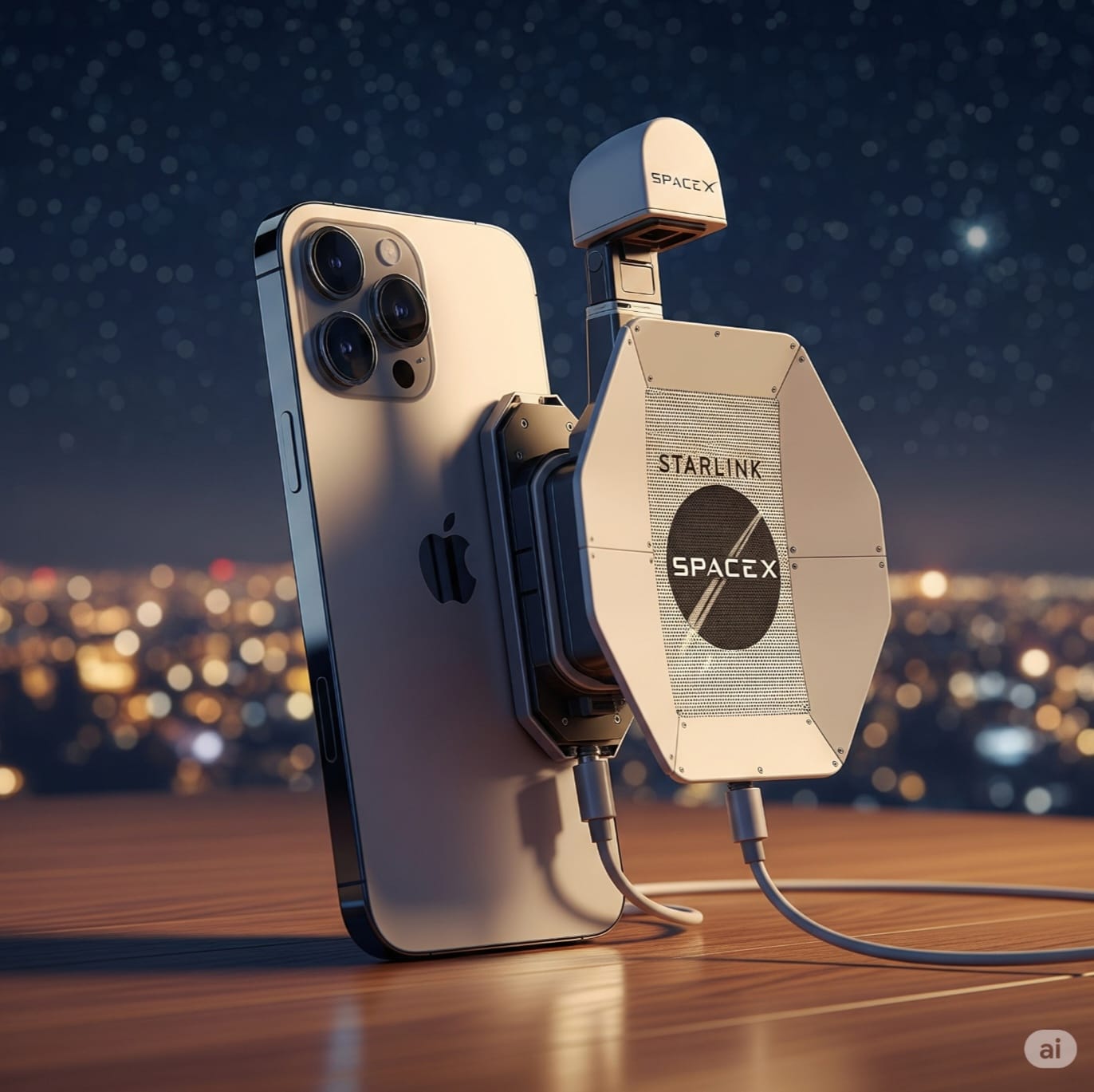In a move that took the tech world by surprise, Apple has quietly partnered with SpaceX and T-Mobile to bring Starlink satellite connectivity to iPhones through the new iOS 18.3 update. Yes – the same Starlink we’ve been relying on to beam internet to remote areas is now sneaking its way into our pockets via iPhones.
This isn’t just a typical feature drop – it’s a massive leap in how we stay connected, especially in areas where cell signals go dark.
iPhones + Starlink = Always Connected?
According to Bloomberg reports and early beta users, Apple has begun testing iPhones connected directly to the Starlink satellite network – something previously thought to be exclusive to Samsung devices like the Galaxy Z Fold and S24. That’s a big shift in direction for Apple, who had been working exclusively with Globalstar since 2022 for their emergency satellite texting service.
Now, with iOS 18.3 quietly activating a new satellite toggle within the iPhone’s cellular settings, some T-Mobile users are seeing something new: a beta notification saying, “You’re in the T-Mobile Starlink beta. You can now stay connected with texting via satellite from virtually anywhere.”
Let that sink in – you don’t need to rely on cell towers anymore to get a message out. This is the beginning of always-on, everywhere connectivity.
What Can It Do Right Now?
At the moment, the Starlink-iPhone integration focuses on text messaging. That means if you’re off-grid – hiking, traveling, or just in a dead zone – your iPhone will attempt to connect to Starlink’s satellite constellation using T-Mobile’s backend, allowing you to send and receive texts.
But Elon Musk has already teased on X that images, music, and podcasts are on the horizon – with video support planned for future updates. This is early-stage stuff, but it’s moving fast.
What About Globalstar?
This move had an immediate ripple effect in the market. Globalstar shares dropped by around 11% after the news hit. It’s no secret Apple is exploring alternatives, and Starlink offers a more robust and scalable satellite infrastructure – one already serving homes, vehicles, and remote sites around the world.
Apple isn’t ditching Globalstar yet, though. For now, emergency services and fallback satellite options still rely on it – but the writing is on the wall.
Who Can Use It?
The T-Mobile beta is rolling out to a select group of users in the U.S. (for now). iPhone users with iOS 18.3 can toggle the feature on in settings. Android users running Android 15 also have access – so it’s not Apple-exclusive. But make no mistake: the integration with iPhones is where the buzz is.
Unfortunately, international users – including us here in the Philippines – are still waiting for availability. But if you’ve been watching SpaceX’s moves lately, you know they’re eyeing global partnerships next. This is just the beginning.
Why This Matters – Especially to Us at BinaryPH
At BinaryPH, we’ve long championed technologies that break limits – and this is one of those moments. The fusion of mobile devices and satellite tech isn’t just cool – it’s game-changing for areas underserved by traditional networks, including many parts of the Philippines.
Imagine never worrying about losing signal again – whether you’re in the mountains of Bukidnon, the coastline of Palawan, or deep in Marawi. Once Starlink satellite texting becomes more widely available, we’re looking at a future where dead zones are a thing of the past.
And yes – we’ll be watching this rollout closely. When this becomes available in Southeast Asia, you can bet BinaryPH will be among the first to test it and break it down for you.
Stay updated with BinaryPH — where tech meets the future.

Leave a Reply